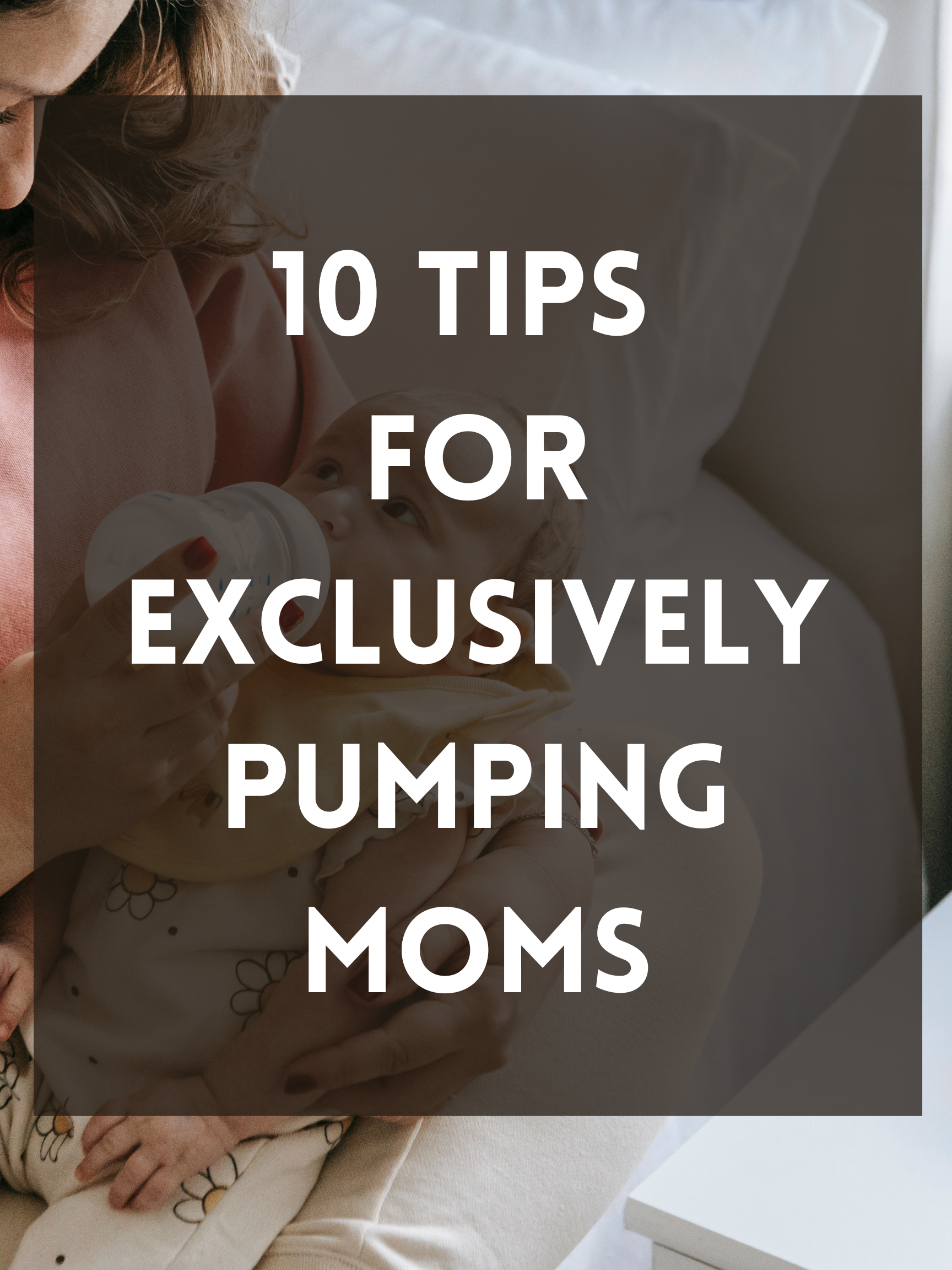I’m an exclusively pumping mama. I nursed Willow for the first 8 weeks, but ultimately decided to make the switch when we had a couple dehydration scares. She took to a bottle without any fuss and it’s been that way ever since. Yes, I know it is more work, but after much trial and error, we found our groove and it’s been working perfectly for us. It also is great that my husband can get some bonding time to feed her before and after work.
I wanted to lay out some of the tips that made this experience 100% better for me. I won’t lie – pumping is not rainbows and butterflies. I have the greatest love/hate relationship with my pump. Love it, because I am able to provide breastmilk for my daughter. Hate it, because… well… the pumping noise is enough to send shivers down my spine. And I will not miss it once all is said and done. It is so time-consuming and exhausting, but at the end of the day, it is what I wanted for my daughter. That doesn’t mean I hate formula or nursing or whatever – I think it is ALL good and every mama and family should do what works for them. There is no right or wrong way to feed your baby. This just happens to be our way. And if exclusively pumping is also your way (or something that you are interested in), then I hope these tips and tricks help. I did a lot of research and reading before I shifted, and it helped immensely!
I also want to note – since I started at about 8 weeks in, my milk supply was pretty much on its way to being established. I was really lucky to have a good supply and to never experience mastitis. In order to establish yours, I recommend meeting with a consultant. I am definitely NOT a professional. I met with my consultant twice, actually! Get their input from the get-go and then go from there.
#1: Use an electric pump (through insurance, if possible!) Please check with your insurance provider to see if you can get an electric pump free of charge. I’m willing to bet you can, and it is such a great money-saving tip. I got this one for free and love it. You will need an electric pump if you are EP, trust me.
#2: ALSO invest in a manual pump. If you are EP, then I truly believe you need to have both. If you are on the go, you are not going to want to drag your electric pump everywhere. I keep this one in my purse most days, but I will also use this during the day if I just don’t feel like being “hooked up.” If Willow is playing on the floor, I grab the manual and will sit there with her and just pump at my own speed. It’s way easier to stop manually pumping if need be then to have to stop the presses with the electric pump. To be honest with you, most days I only use the electric pump first thing in the morning while my husband feeds Willow and then again right before bed. The manual pump is just easier and quicker when you have a baby that is awake and on the move!
#3: Use a hands-free bra. My pumping game was changed when I finally gave in. A hands-free nursing bra was EVERYTHING AND MORE. It is not very comfortable, so I literally will only put it on to pump, but I keep it at my station. I am able to use my phone, work, or browse the internet while I am pumping. It makes the 15-20 minutes fly by. I know it looks silly, but please for the love of God, buy one of these and save your sanity.
#4: Buy and swap out parts every couple of months. You can find pump replacement parts and back-ups on Amazon, easily. It’s important that you replace every couple of months (2-3 at most) to have the most efficient pump. When I start to notice that my supply looks low, it is usually because something needs to be replaced. Once I do, the suction is better and my supply is much better.
#5: Pump each time your baby takes a bottle to keep up with demand. This is a no-brainer, but you will need to hear this. I’ve skipped pumping sessions before due to people coming over or just being busy, and then my supply takes a hit. Do your very best to make sure you pump each time you use a bottle. I usually will pump after feeding Willow. Once she is done, I will put her in her bouncer or walker and will sit across from her with my manual pump. We will play and chat while mama gets her pump session in. (I am very lucky to freelance and work from home!)
#6: Pump for at least 15-20 minutes. I find that I can pump what I need in 15-20 minutes. This may vary from person-to-person, but this is a good amount of time to aim for. If you are not making enough to fill a bottle, you may want to pump a bit extra to make sure your body knows that it needs to produce more.
#7: Use bottles that are compatible with your pump. For me, the Avent bottles hook-up to my pump, which makes it so much easier. Less cleaning!! Every little time-saving tip helps when you are EPing, I swear.
#8: Establish a schedule and plan to pump every 3-4 hours. Keep times in mind so that you won’t forget. I even set an alarm on my phone in the beginning so that I wouldn’t. Just to give you an idea, my schedule was usually: 6AM, 9AM, 12 NOON, 3/4PM, 7/8PM. This has kept my supply alive and well, even when she has growth spurts and needs a little extra. I just recently cut down to 3-4 pumps a day (now that Willow is eating more solids and taking larger bottles between less time). You’ll find what works for you and baby fairly fast.
#9: Use coconut oil. If your nipples are sore or cracked, coconut oil works wonders. I will lube up even before pumping, sometimes.
#10: Drink lots of water. Just keep drinking water! The more hydrated you are, the more milk your body will produce.
Are there any other EPing moms here? Again – it is a lot of work, but it is all worth it. And it is temporary. Telling myself this in the beginning definitely kept me feeling good about the decision to EP. Some days, you need it! xx bianca



